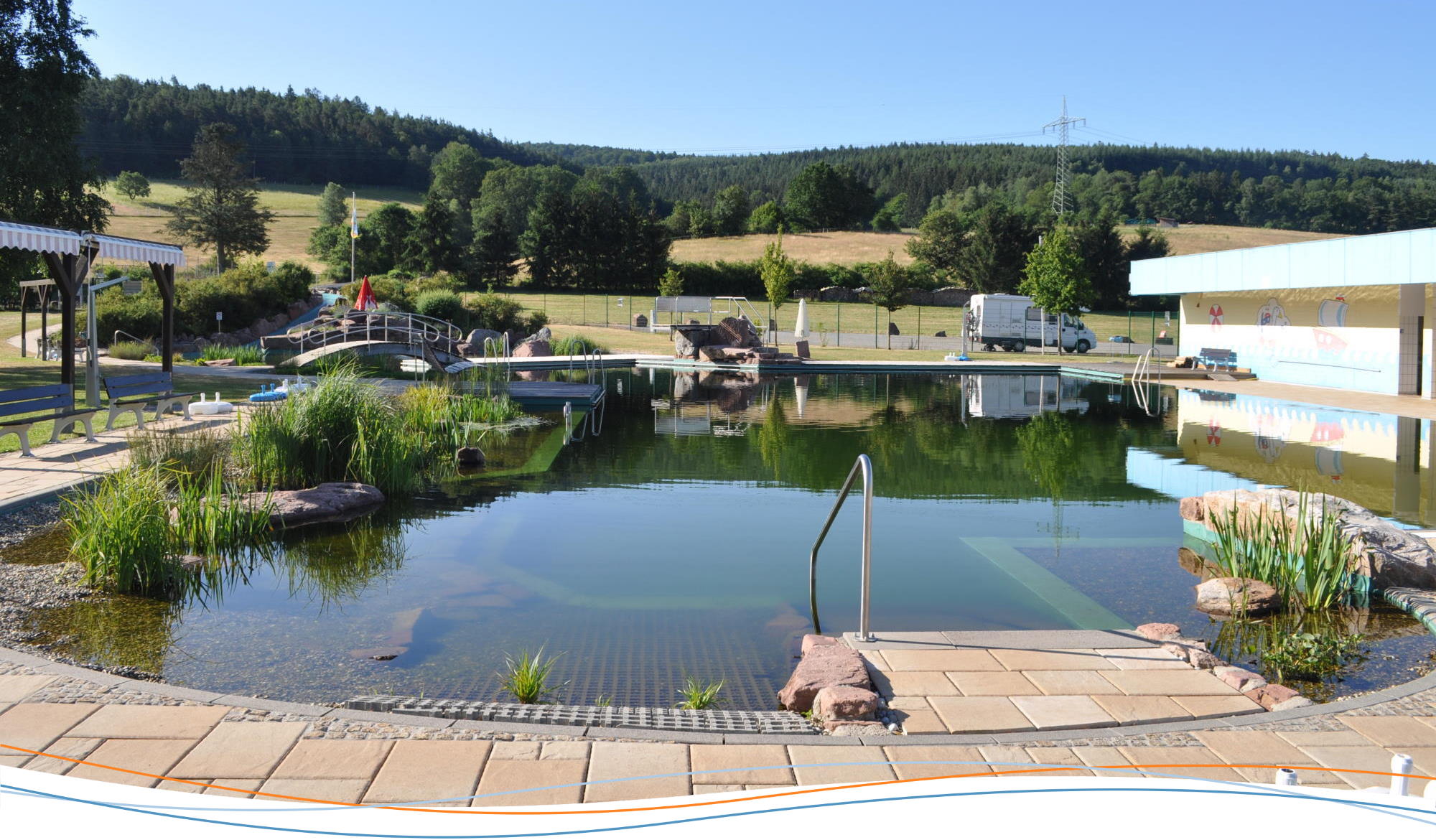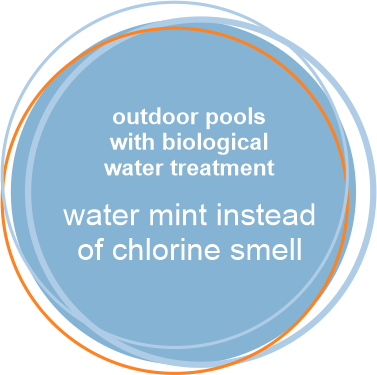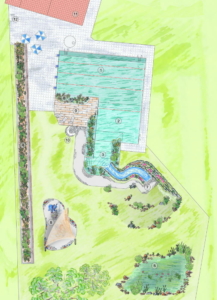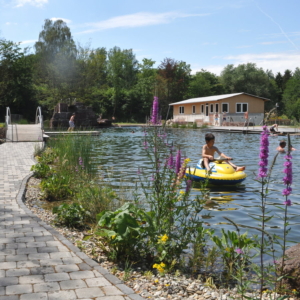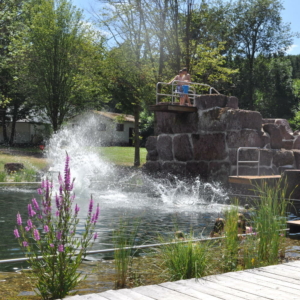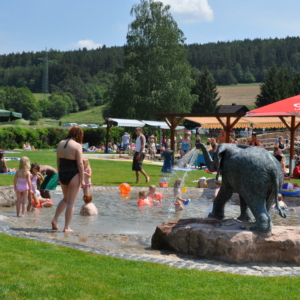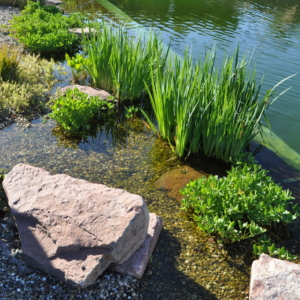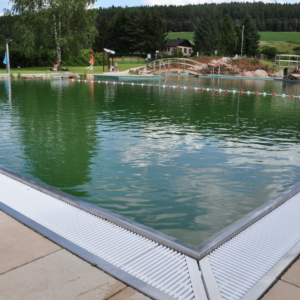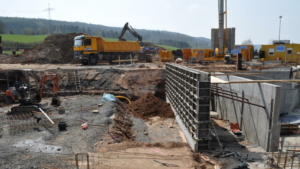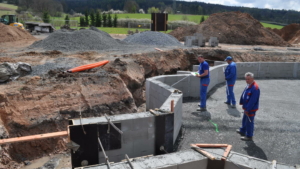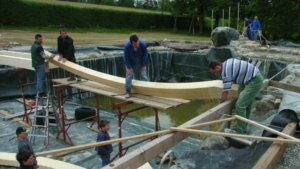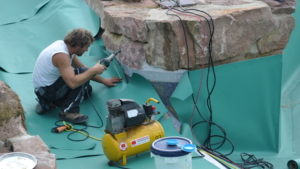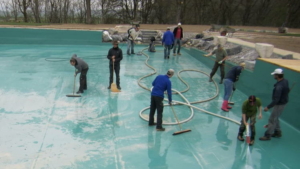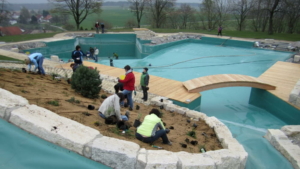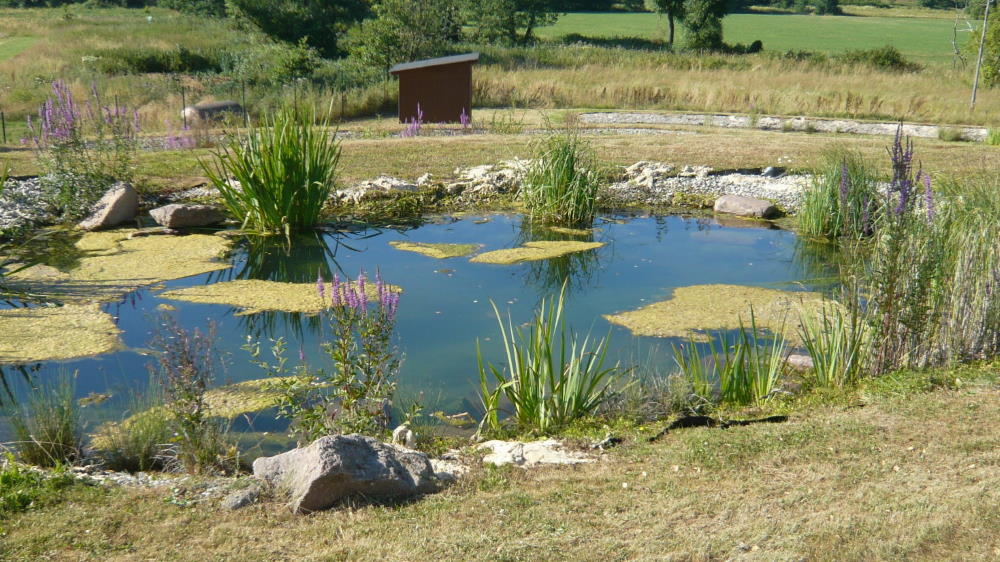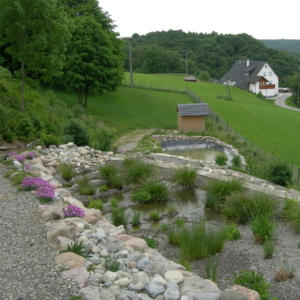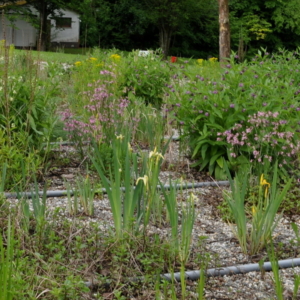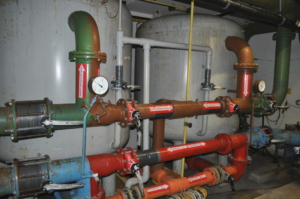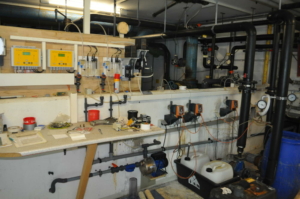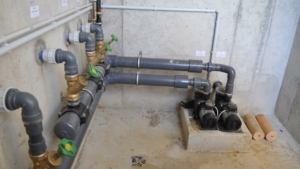Local politicians and committed citizens have to struggle their way through this decision-making process. We, as natural pool planners, are happy to contribute to this process with our designs and cost estimates. Please contact us!
We create original designs and provide you with references. The best recommendation for a natural pool is a satisfied customer and a functioning natural adventure pool.
“We came because
the pool water
feels so pleasant
on the skin.”
Flowing transitions – organically designed
Just as all architecture bears the signature of its designer, design elements that we love to work with keep reappearing in our natural pools.
On the one hand, these elements have proven themselves and have been improved by us over time, such as the water bob, the wooden bridge, the entry ladders, the hand barrel or the stainless steel overflow channel. These are all elements that can be made by local craftsmen according to our plans.
On the other hand, we plan with details that we simply like such as the organically curved shorelines with embedded vegetation zones. We use local natural stone wherever possible to build jump rocks, seating areas, or slope stabilization.
imposing diving rock, 3.40 m high
small children’s pool made of natural stone mosaic from red basalt tuff with water spouting elephant
Construction & citizens’ contribution
Our natural pools are created by local craftsmanship and with freely available building materials. We work unaffiliated with any of the system suppliers that are in the business. Our payment is exclusively our engineering fee.
The conversion of an outdoor swimming pool into a natural swimming pool rarely works out as a complete DIY project; more complex construction measures are usually required. However, we always design our tenders in such a way that a maximum of own contribution is possible. The main part of the work – the demolition and structural work – usually has to be put out to public tender. The partial lots for woodwork, locksmithing, plumbing and electrical work can usually be awarded on a restricted basis. As a rule, regional craftsmen are then awarded the contract.
The hour of the self-providers strikes with the organization of the outside plant. We often only invite tenders for the supply of materials. The installation is then carried out by committed citizens.
Natural water treatment
A functioning water circulation system is a prerequisite for the functionality of the natural pool. It must be ensured that floating pollutants such as pollen, dust, leaves, hair and slime are quickly removed from the pool. The water treatment is then carried out in three purification stages:
1. dirt and leaf trapping
Here sinking and floatable substances are retained.
2. planted bottom filter
The principle of the planted soil filter is similar to that of the constructed wetlands. During the flow through the filter material different cleaning processes interlock. Microorganisms settle in the soil body by themselves and decompose by their metabolism accumulating pollutants. The plants promote the living conditions for the microbiome, for example by transporting oxygen into the substrate via the roots.
3. regeneration pond
A regeneration pond is the essential building block in our water treatment system. It should be shallow and sun-drenched, with dense riparian and aquatic vegetation. Algae growth is also welcome here, as they perform an important function in the regeneration pond, fixing nutrients in biomass.
The regeneration pond is an essential component of water treatment.
“It speaks for the water quality
that rare newt species are also found.”
Reducing operating costs
To purify the pool water, it only needs to be kept circulating and filtered through the various biological purification stages. This is done by means of pumps that are switched with a simple control system. Chemical agents and technical sand filters can be dispensed with. For example, operating costs at the Altengronau outdoor pool were reduced from €50,000 per year to €20,000 per year during the conversion to a natural pool.
Maintenance work consists mainly of horticultural care of the overgrown bottom filter and the fining pond and a cleaning of the pool in spring, when the pool water is drained. Lime should be loosened from the waterproofing tarps every 5 to 10 years. The toddler pool is to be considered a shallow water play area where toddlers can splash without having to use high volumes of water to maintain sanitation. The toddler area must be fed with potable water and draining is done through the sewer.
View into the technical room of a conventional outdoor pool before the conversion into a natural pool.
And what has remained…

